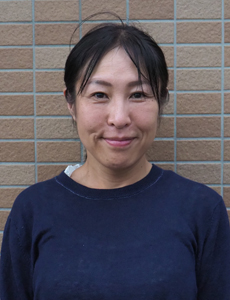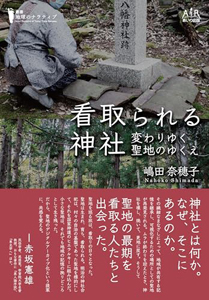Series “Visiting Villages” 33 A Trip to the Ado River Basin with the Author of “Shrines at Rest: The Changing Future of Sacred Places” ①

嶋田奈穂子先生
( Naoko Shimada)
I explored the Ado River Basin in Shiga Prefecture with Naoko Shimada, author of “Shrines at Rest: The Changing Future of Sacred Places” (Airi Publishing) and a part-time lecturer at the Faculty of Economics at Shiga University, specializing in regional studies. We explored the shared memories of the region, visiting small, unknown shrines with deep histories. The journey allowed me to ponder how communities are born, grow, and close. (Kitajima Kei)
I arrived at Otsu Station at 11:00 AM on Monday, August 25th. It was about a 10-minute ride on the JR Biwako Line from Kyoto to Otsu. Shiga, my first time visiting, was surprisingly close. Incidentally, locals sometimes refer to it as “Otsu Ward, Kyoto City.” I met up with Professor Shimada in front of Otsu Station and toured the Azumigawa River basin in her car.
The purpose of this research was to understand how communities are born, grow, and close, focusing on the traditions and culture that have been nurtured in the area.
I was inspired by Professor Shimada’s recent book, “Shrines Being Cared For: The Changing Future of Sacred Places.”
By touring villages, I was able to gather information on local conditions, particularly in areas known as depopulated areas, and explore what Japan will look like in the future, or what local areas should look like in the future.
Of course, there are many different opinions, and it’s not something that can be easily organized. That said, one thing I can say for sure is that the status quo cannot be maintained forever.
A major factor behind this is, needless to say, population decline. A gradual decline would be one thing, but with such a rapid decline, and according to statistics from the National Institute of Population and Social Security Research, Japan’s population is expected to be more than half within 100 years, the shrinking of local areas is inevitable.
Personally, I believe it is best to preserve existing communities as sustainable as possible, and that indiscriminate consolidation is hasty. However, amid the rough seas of population decline, I predict that we will see a gradual increase in cases where communities will disappear without anyone noticing, like a natural phenomenon, or where the decision to close a community will be made out of necessity.
When walking around a village, it’s easy to imagine the reality of the future. For example, say you walk through a certain settlement in a certain area. There are rows of decent houses and the streets appear well-maintained. However, in reality, no one lives there. The former residents have already moved to the city, returning only on weekends to clean their homes and tend to the fields. There are many people living this kind of lifestyle in local areas. And the majority of these people are elderly. Once they pass away, the community will likely disappear without a trace.
“There is history, but no future.” Such areas are quietly but surely increasing in number.
While it’s true that, in a sense, it’s inevitable for regions to disappear like a natural phenomenon, and this is something we can accept as a fact of life, what happens when people are forced to close their ties to their community?

In the future, there will inevitably be an increasing number of cases where people want to continue living in an area, but for various reasons, it becomes difficult to continue living there and they are forced to relocate.
Residents understand this intellectually. By analyzing a variety of data, such as the local government’s financial situation, the aging of social infrastructure, trends in climate change, and future population trends, it may be logically concluded that continuing to live in the area is not wise and that relocation is inevitable, but their emotions may not agree.
“I don’t want to leave this area, which is filled with so many memories,” “I feel sorry for my ancestors who pioneered this land,” “I can’t let the history and traditions of this area die out with my generation.”
Even if something may seem insignificant to an outsider with no connection to the area, to the people who live there, it is absolutely uncompromising. And there are more such values than you might imagine. Community spaces have countless intangible values that cannot be measured by numbers or data. That is what communities are like, and it is these countless intangible values that foster local love.
I ponder how to convince residents when such communities are forced to close for some reason and their loyal residents are forced to leave, or what methods can be used to persuade them to relocate.
I see this as an extremely important issue in ensuring the health and sustainability of Japan’s communities in the future.
Simply waving around numbers and data may make people understand the idea head-on, but it does not convince the heart. If the heart is not convinced, it will only create friction.
When closing a community, surely we need a story that encompasses and justifies the act and shows the way forward—a story that appeals to the emotions, so to speak. It was while I was thinking about these things that I came across “A Shrine Cared for: The Changing Future of Sacred Sites.”
※Translating Japanese articles into English with AI
